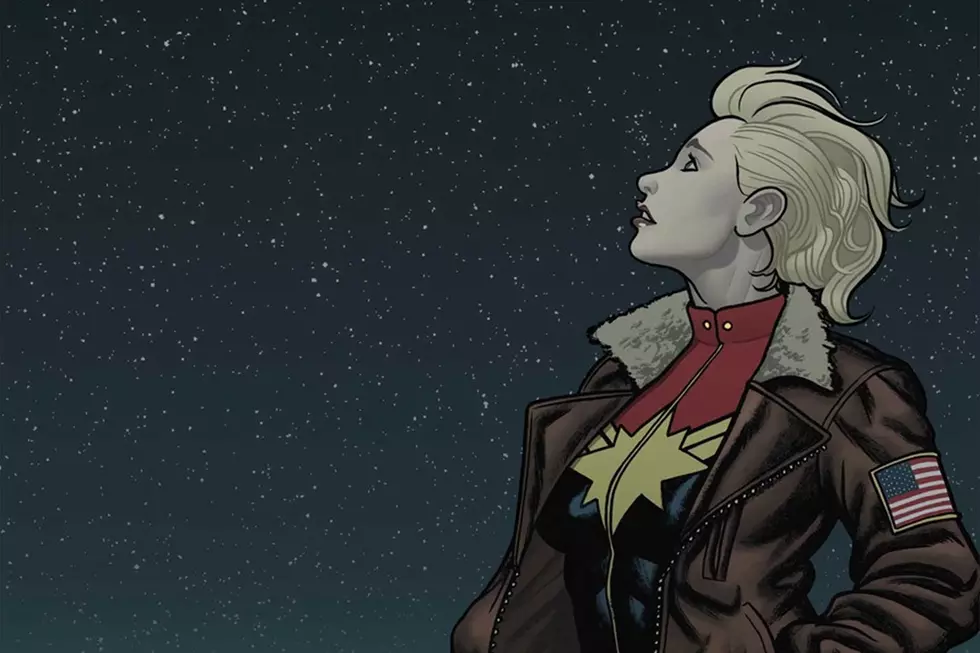![My Favorite Monster: That Handsome Devil Nightcrawler [Fantasy Week]](http://townsquare.media/site/622/files/2016/10/nightcrawler-feat.jpg?w=630&h=420&zc=1&s=0&a=t&q=89&w=980&q=75)
My Favorite Monster: That Handsome Devil Nightcrawler [Fantasy Week]
This week is Fantasy Week at ComicsAlliance, celebrating the best in magical fiction and imaginary worlds, and we’ve invited our writers to mark the occasion by celebrating a hallmark of the genre; the legendary creatures and outcast freaks we call “monsters.” This is My Favorite Monster.
Ever dance with the devil in the pale moonlight?
That question, posed by Jack Nicholson's Joker in the 1989 Batman movie, comes across as an esoteric threat in that context; a destabilizing glimpse into the mind of a madman. Yet the exact same question asked by the X-Men character Nightcrawler would seem like an invitation to possibly the most romantic night of your life, and you'd probably be swept off your feet. If Nightcrawler is a devil, he makes it look good --- perhaps just as much as the Joker makes clowns look bad.
One of the 'all-new' X-Men that debuted in Giant-Sized X-Men #1 in 1975, Nightcrawler was originally conceived by artist Dave Cockrum as a demon exiled from Hell. Cockrum told Wizard magazine that he came up with the character while kept awake at night by a typhoon in Guam, where he was stationed with the United States Navy.
Cockrum pitched the character to DC for a Legion of Super-Heroes spin-off team, but DC passed, so the character came to Marvel as Kurt Wagner, a German mutant with a coincidentally devilish appearance, for the book's new international roster.
Thus Nightcrawler became the X-Men's first true "freak," its first truly monstrous mutant. Sure, Beast blue himself by the time Nightcrawler came along, and Angel was "cursed" with those beautiful white wings, but Nightcrawler was always very visibly a mutant, one who could never pass for an "average" human. He was born with blue fur, fangs, a tail, yellow eyes, and only three toes and three fingers on each hand and foot. Long before he developed the power to teleport, he was treated with fear and suspicion based on his looks. In his first appearance, Nightcrawler was being hounded by a mob that blamed him for the deaths of some local children (who had actually been killed by his unhinged and very much human brother).
As a true freak, a true outcast, Nightcrawler opened the door for other characters struggling to come to terms with their physical selves and how the world perceives them, like Wolfsbane, Chamber, Caliban, Marrow, Beak, and Broo. In a franchise that's about prejudice, Nightcrawler was one of the most sympathetic characters for anyone who ever felt ugly, different, or weird because of their appearance.
And what made Nightcrawler an inspiring character is that he came out the other side. He survived clear bouts of depression, self-doubt, and even self-loathing, to become the poster boy for letting your freak flag fly. Thanks to the love and appreciation of his found family of X-Men, the blue elf became an upbeat, life-affirming, swashbuckling romantic. Nightcrawler went from hiding in a circus to treating the whole world as his stage. He came out, and he took pride in being different, and that made him one of the most uplifting characters in comics.
That's why it's disappointing to see the character backslide so often into stories about misery and madness. We all have those moments where our self-acceptance falters and the dark clouds gather, but Nightcrawler has spent too much time of late fretting about his faith, his family, his place in the world, or being burdened with unnecessary stories about his dad being an actual devil, or worst of all, just being dead.
The actual devil does have a place in Nightcrawler's stories, mind you; I love that Nightcrawler is a man of faith, and I especially love that he is, like me, a Catholic. The Catholic Church can be a tough place to be an abomination, but all that doctrine and rigor has always created fertile ground to explore personal heresies, and a bon vivant Catholic devil is a living, breathing heresy, a reminder that faith cannot be prescribed; it has to be discovered.
Perhaps most of all, I love that Nightcrawler is a sex symbol. Like Alexandre Dumas' Aramis from The Three Musketeers --- a clear influence on Nightcrawler --- he's both a man of the cloth and a lady's man, and the charming and seductive side of the character is the ultimate exultation of the freak. Kurt grew up insecure and afraid, but he became one of comics' most desirable leading men, and what changed was not his outward appearance, but his ability to love himself. What Nightcrawler ultimately teaches us is that "monster" is just a matter of perspective.
More From ComicsAlliance


![Cast Party: Who Should Star In An ‘Amethyst’ Movie? [Fantasy Week]](http://townsquare.media/site/622/files/2016/10/ame_featured.jpg?w=980&q=75)
![Strange Company: The Marvel Mystical Fantasy Draft, Part Three [Fantasy Week]](http://townsquare.media/site/622/files/2016/10/mystic-day-three-feat.jpg?w=980&q=75)
![Witchcraft, Redemption and Family Ties: James Robinson Talks Scarlet Witch [Interview]](http://townsquare.media/site/622/files/2016/10/scarletwitch-feat.jpg?w=980&q=75)
![Dear Friends and Deer Friends in Keezy Young’s ‘Yellow Hearts’ [Webcomic Q&A]](http://townsquare.media/site/622/files/2016/10/YH-Header-for-Jon.png?w=980&q=75)
![If He Be Worthy: Does Walt Simonson’s ‘Thor’ Live Up To Its Reputation? [Fantasy Week]](http://townsquare.media/site/622/files/2015/09/Simonson01.jpg?w=980&q=75)
![My Favorite Monster: Facing Your Demons With Mazikeen [Fantasy Week]](http://townsquare.media/site/622/files/2016/10/mazikeen-featured.jpg?w=980&q=75)
![The Issue: Double Exposure In ‘Shutter’ #23 [Fantasy Week]](http://townsquare.media/site/622/files/2016/10/TheIssue-Shutter.jpg?w=980&q=75)
